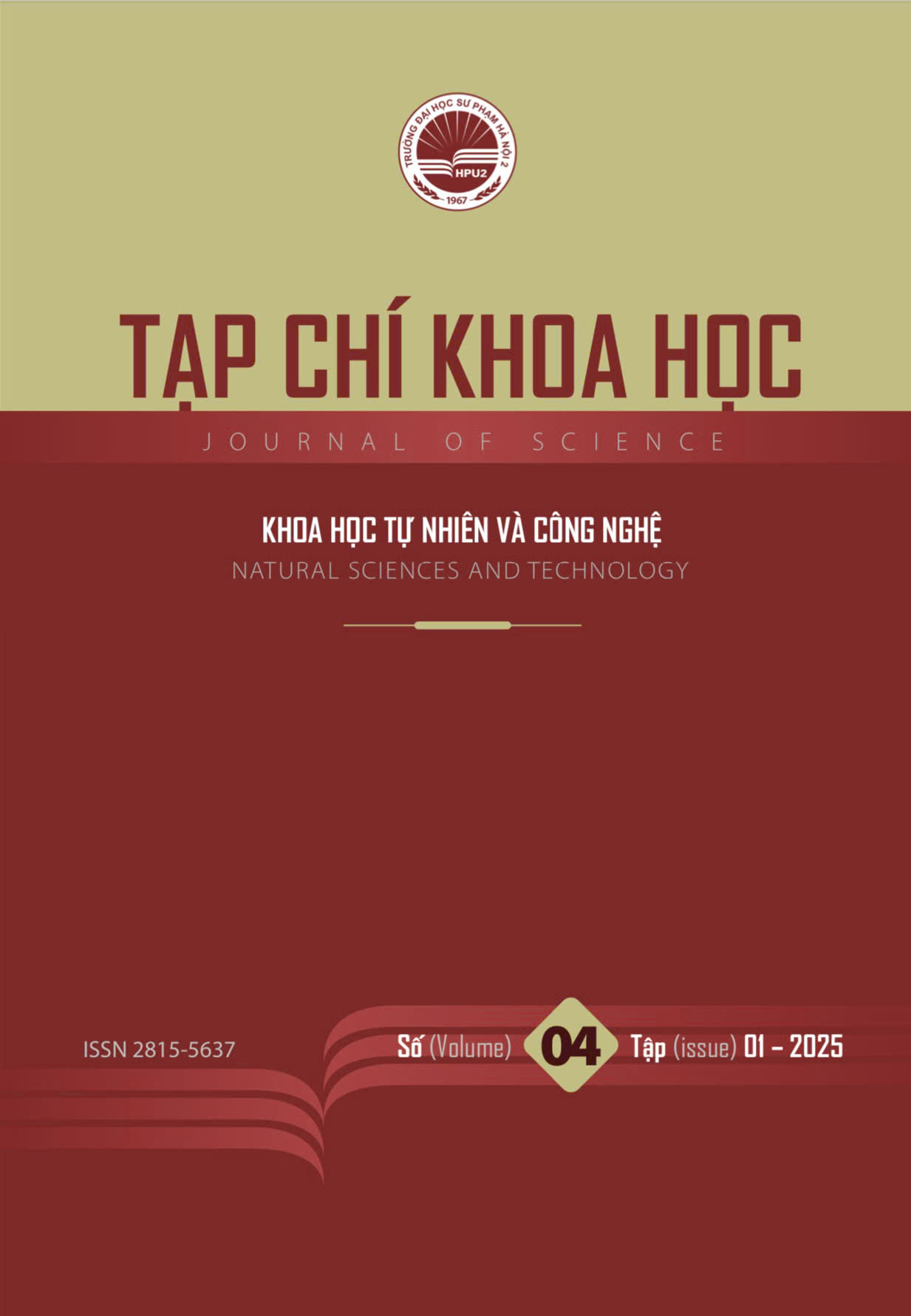Cost-benefit analysis: utilizing mathematics to optimize economic project decisions
DOI:
https://doi.org/10.56764/hpu2.jos.2025.4.01.48-59- Keywords:
- economic
- decision
- mathematical techniques
- benefits
- costs
Abstract
Cost-Benefit Analysis (CBA) is an essential tool for economic decision-making, providing a systematic way to evaluate the financial value of projects. It employs mathematical techniques to quantify benefits and costs, enabling decision-makers to compare various options. By translating potential gains and expenses into monetary values, CBA identifies projects that yield the highest net benefits. This method allows decision-makers to assess investment feasibility, optimize resource allocation, and prioritize projects based on their economic efficiency. The article emphasizes the importance of mathematical techniques in enhancing informed decision-making during project evaluations. It illustrates how Cost-Benefit Analysis (CBA) contributes to effective economic planning and resource management. By providing a structured framework to quantify benefits and costs, CBA helps decision-makers assess investment feasibility and prioritize projects. This ensures optimal resource allocation and maximizes net benefits, ultimately guiding stakeholders toward economically efficient choices.
References
[1] P. G. Sassone and W. A. Schaffer, Cost-benefit Analysis. Cambridge, USA: Academic Press Inc, 1978.
[2] M. Florio, “European and International Perspectives on Benefit-Cost Analysis: Symposium Introduction,” JBCA, vol. 12, no. 1, pp. 55–63, 2021, doi: 10.1017/bca.2020.35.
[3] H. M. Levin, “Cost-benefit analysis: theory and application,” Evaluation and Program Planning, vol. 20, no. 3, pp. 288–290, Aug. 1997, doi: 10.1016/s0149-7189(97)89859-x.
[4] Osório Nhiuane, Sá Nogueira Lisboa, M. Popat, and Almeida Sitoe, “Quantifying the costs and benefits of forest conversion through slash-and-burn cultivation and conventional logging,” Trees, forests and people, pp. 100504–100504, Jan. 2024, doi: 10.1016/j.tfp.2024.100504.
[5] C. Leuz and P. D. Wysocki, “The Economics of Disclosure and Financial Reporting Regulation: Evidence and Suggestions for Future Research,” Journal of Accounting Research, vol. 54, no. 2, pp. 525–622, Apr. 2016, doi: 10.1111/1475-679X.12115.
[6] P. A. Samuelson, “Proof That Properly Discounted Present Values of Assets Vibrate Randomly,” The Bell Journal of Economics and Management Science, vol. 4, no. 2, p. 369, 1973, doi: 10.2307/3003046.
[7] R. Kazman, Jai Asundi, and M. Klein, “Quantifying the costs and benefits of architectural decisions,” International Conference on Software Engineering, pp. 297–306, Jul. 2001, doi: 10.5555/381473.381504.
[8] O. Špačková and D. Straub, “Cost-Benefit Analysis for Optimization of Risk Protection Under Budget Constraints,” Risk Analysis, vol. 35, no. 5, pp. 941–959, Feb. 2015, doi: 10.1111/risa.12310.
[9] M. A. Ortega-Vazquez and D. S. Kirschen, “Optimizing the Spinning Reserve Requirements Using a Cost/Benefit Analysis,” IEEE Transactions on Power Systems, vol. 22, no. 1, pp. 24–33, Feb. 2007, doi: 10.1109/tpwrs.2006.888951.
[10] G. S. Becker, “Investment in Human Capital: A Theoretical Analysis,” Journal of Political Economy, vol. 70, no. 5, Part 2, pp. 9–49, Oct. 1962, doi: 10.1086/258724.
[11] L. Larsson, Evaluating Social Programs: Active Labor Market Policies and Social Insurance. Sweden: Uppsala, Jan. 2002.
[12] D. McFadden, “The measurement of urban travel demand,” Journal of Public Economics, vol. 3, no. 4, pp. 303–328, Nov. 1974, doi: 10.1016/0047-2727(74)90003-6.
[13] StevenR. Lerman, “Urban travel demand: A behavioral analysis,” Transportation Research, vol. 10, no. 4, p. 283, Aug. 1976, doi: 10.1016/0041-1647(76)90063-0.
[14] K. J. Lancaster, “A New Approach to Consumer Theory,” Journal of Political Economy, vol. 74, no. 2, pp. 132–157, Apr. 2019, doi: 10.1086/259131.
[15] A. J. Keith and D. K. Ahner, “A survey of decision making and optimization under uncertainty,” Annals of Operations Research, Oct. 2019, doi: 10.1007/s10479-019-03431-8.
[16] P. Sevastjanov and L. Dymova, “Stock screening with use of multiple criteria decision making and optimization☆,” Omega, vol. 37, no. 3, pp. 659–671, Jun. 2009, doi: 10.1016/j.omega.2008.04.002.
[17] J. S. H. Kornbluth, “Dynamic multi-criteria decision making,” Journal of Multi-Criteria Decision Analysis, vol. 1, no. 2, pp. 81–92, Oct. 1992, doi: 10.1002/mcda.4020010204.
[18] C. A. Menzie and J. S. Freshman, “An assessment of the risk assessment paradigm for ecological risk assessment,” Human and Ecological Risk Assessment: An International Journal, vol. 3, no. 5, pp. 853–892, Nov. 1997, doi: 10.1080/10807039709383732.
[19] W. E. Cooper, “Risk Assessment and Risk Management: an Essential Integration,” Human and Ecological Risk Assessment: an International Journal, vol. 4, no. 4, pp. 931–937, Jan. 2019, doi: 10.1080/10807039891284884.
[20] N. J. Garber and S. Subramanyan, “Incorporating Crash Risk in Selecting Congestion-Mitigation Strategies: Hampton Roads Area (Virginia) Case Study,” Transportation Research Record: Journal of the Transportation Research Board, vol. 1746, no. 1, pp. 1–5, Jan. 2001, doi: 10.3141/1746-01.
[21] N. J. Garber and S. Subramanyan, “Incorporating Crash Risk in Selecting Congestion-Mitigation Strategies: Hampton Roads Area (Virginia) Case Study,” Transportation Research Record: Journal of the Transportation Research Board, vol. 1746, no. 1, pp. 1–5, Jan. 2001, doi: 10.3141/1746-01.
Downloads
Published
How to Cite
Volume and Issue
Section
Copyright and License
Copyright (c) 2025 Thanh-Xuan Cao Thi

This work is licensed under a Creative Commons Attribution-NonCommercial 4.0 International License.







